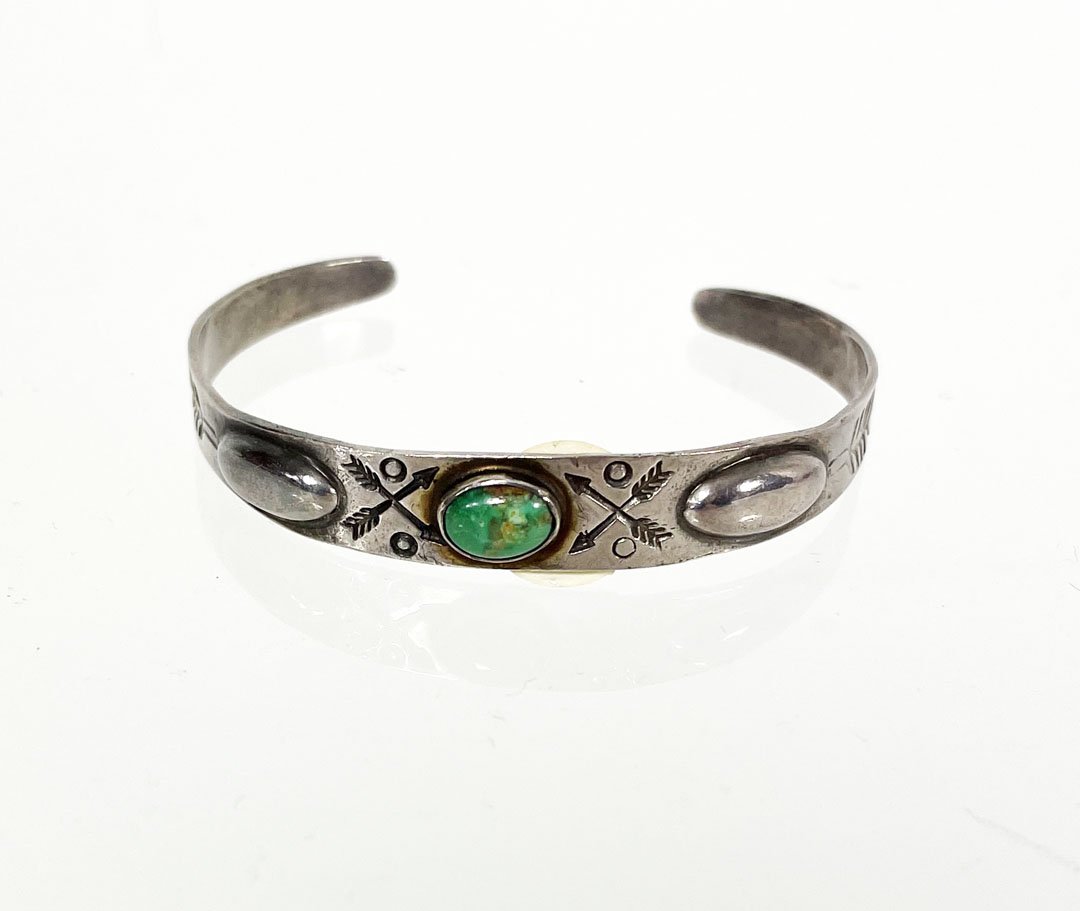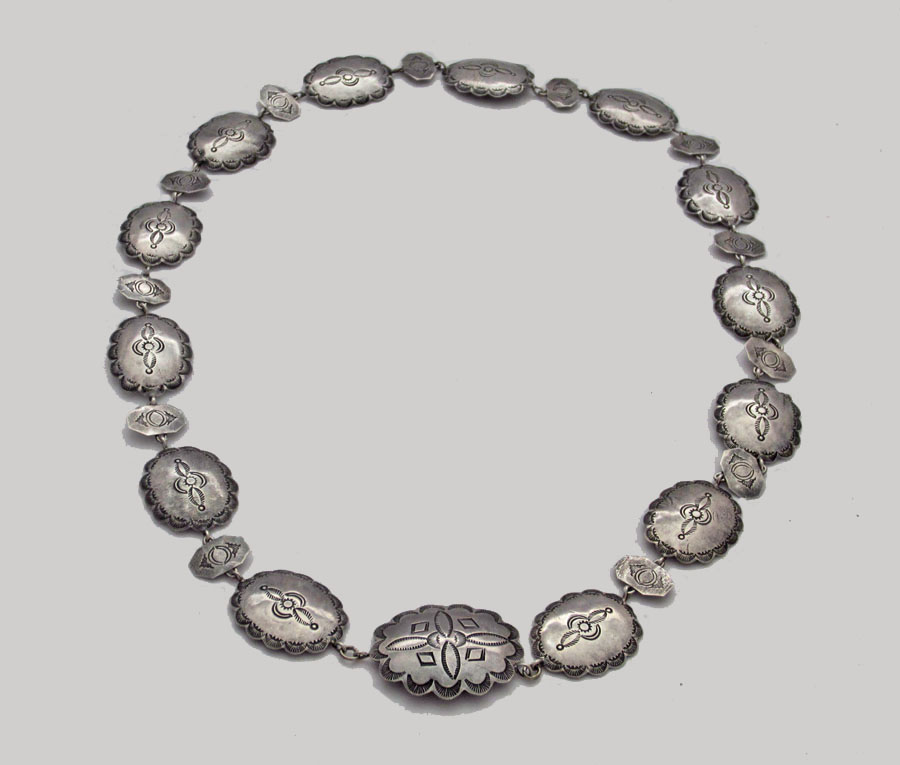The Navajo (Dine') learned how to work silver in the mid-nineteenth century. They had long appreciated silver jewelry that they acquired from Southwestern Hispanics and Plains tribes but it is generally believed that they did not learn how to make metal jewelry until circa 1850 when Atsidi Sani became friends with a Mexican smith named Nakai Tsosi. Tsosi taught him how to work iron so that he could make bridles that he could sell to other Navajo. After the end of the Navajos' internment at Bosque Redondo near Fort Sumner in 1868, Nakai Tsosi taught Atsidi Sani how to smith silver for jewelry. He, in turn, taught his sons and other Navajos.
Another silversmith, Atsidi Chon, went to Zuni in 1872, where he taught Lanyade how to work silver. Other men in turn taught silversmithing in the 1870s to men in Acoma, Laguna, and Isleta.
One of the earliest forms of silver jewelry that the Navajo made were "conchos", also called "conchas", worn on leather belts. The form derives from Ute conchos that were worn as hair ornaments or long drops hanging from belts. By the late 19th century, the Navajo began to set stone in the conches. These belts went on to become iconic and they continue to be made today.
The earliest concho belts were made out of hammered coin silver. Their designs progress through stages, beginning with an oval shape that was scalloped on the edges, elementary stamping and chiseling. The center of the First Phase concho was an open diamond or oval and the back had a copper loop through which a leather belt could pass.
As time went on, the designs became more elaborate. Note the Navajo concho belt that is pictured to the left: The center of the concho is now pushed out through repousse' work and the center of the concho is closed. In addition, a fine turquoise square stone has been added to the center. The concho is backed in some instances such as this with a leather backing.
The railroads arrived in the Southwest in the 1880s. The Fred Harvey Company opened shops in the railroad stations and provided a ready market for Navajo silver. As a result, silver smithing flourished and designs were elaborated, often reflecting Anglo taste. The concho belt to the left has arrows that are intricately worked into the design, an example of some of the high-quality Fred Harvey jewelry that was offered.
Concho belts continue to be worn and valued by the Navajo and Anglos alike. Quality work continues into contemporary times with a continuation and development of traditional designs. The belt to the left has beautiful repousse', wirework, and quality turquoise stones. It is hard to definitively date it.
During the Depression through World War II and into the 1950s, the Navajo made concho belts that were not on leather, perhaps because of a shortage of leather. They are made out of sterling silver. They were made for sale. Most women had small waists at that time; thus many people wear this style as a necklace today.




















